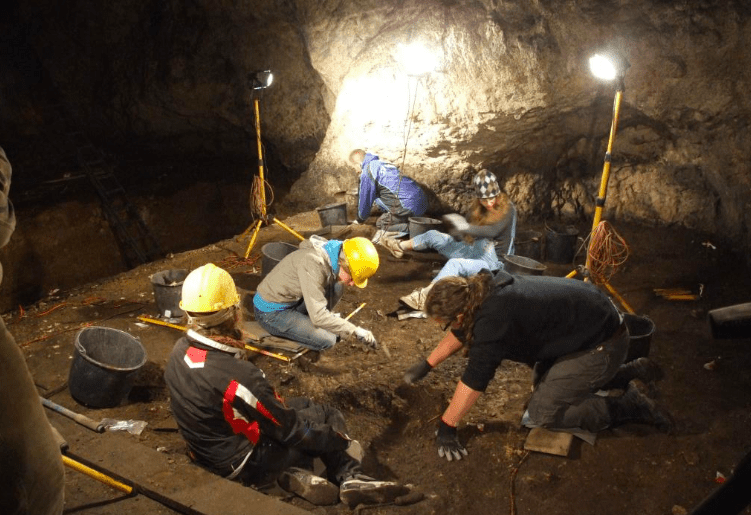It’s not clear if the bird killed and ate the child or if it simply found its corpse, but recently-analyzed bones strongly hint at a gruesome story.

About 115,000 years ago, a Neanderthal child had a really bad day What killed the child is not clear, but what is clear is that his body (or at least some parts of it) were ingested by a large, prehistoric bird — his phalanges (finger bones) passed “through the digestive system of a large bird,” Paweł Valde-Nowak, a professor of archaeology at Jagiellonian University in Kraków, Poland, said in a statement.
“This is the first such known example from the ice age,” he added.
The bones themselves are pretty old — two times older than any other Neanderthal remains found in the area.
“The bones our team discovered in Cave Ciemna are the oldest human remains from the area of today`s Poland, they are about 115,000 years old” said Valde-Nowak.
But age is not what makes the bones stand out.
From the very first inspection, researchers noticed something unusual: the bones seemed to be dotted with many small holes, similar to a strainer. A closer analysis revealed that the child was aged between 5 and 7, with bones about 1 cm long. But the analysis also revealed something else, much darker: the small holes were caused by passage through a bird’s digestive system.
“Analyses show that this is the result of passing through the digestive system of a large bird. This is the first such known example from the Ice Age” – says Prof. Valde-Nowak.
In other words, the unfortunate Neanderthal child was eaten by a bird.

It is possible that the bird actually hunted and killed the child while it was unsupervised, or it could have simply been a scavenger. At this point, neither hypothesis can be ruled out, and both are quite plausible.
The bones are too deteriorated to yield any useful DNA information, but anthropologists are certain they belong to a Neanderthal.
“We have no doubts that these are Neanderthal remains, because they come from a very deep layer of the cave, a few meters below the present surface. This layer also contains typical stone tools used by the Neanderthal,” adds Valde-Nowak.
This gruesome story might be useful for researchers, who are trying to figure out how Neanderthals moved around Europe. They probably appeared in Poland (as in the rest of the continent) around 300,000 years ago. The oldest stone tools they used, discovered on the Vistula, are over 200,000 years old. But we’re not really sure how much they lived.
“Unfortunately, we do not have strong arguments in this discussion,” the archaeologist concludes.
The study has been published in the Journal of Anthropology & Archaeology.


